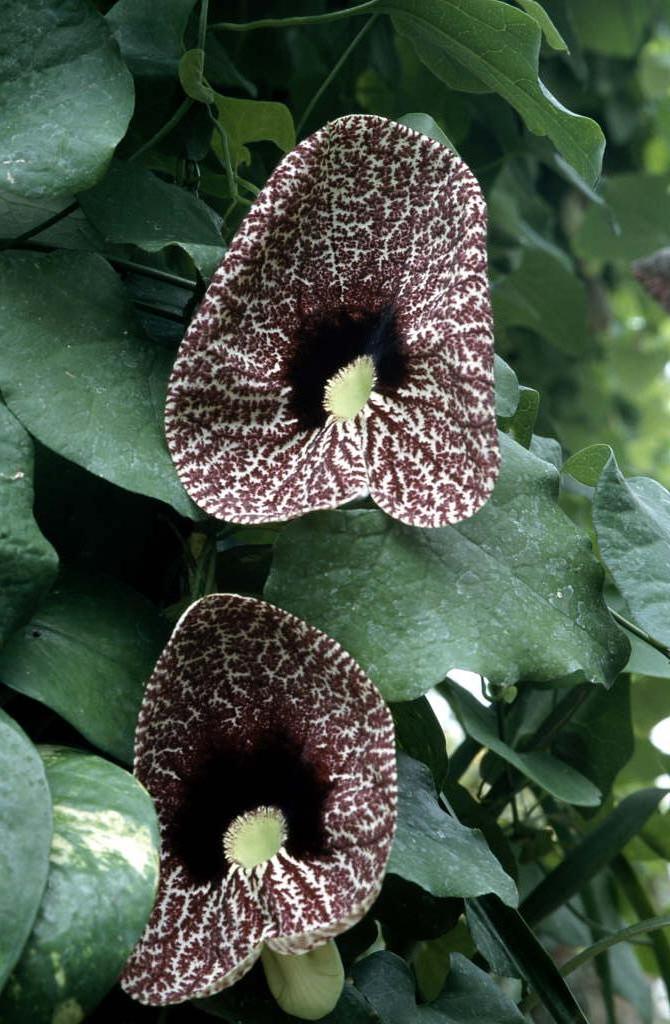Size
Ultimate height
4–8 metresTime to ultimate height
5–10 yearsUltimate spread
2.5–4 metresGrowing conditions
Moisture
Moist but well–drainedpH
NeutralColour & scent
| Stem | Flower | Foliage | Fruit | |
| Spring | Grey Silver | |||
|---|---|---|---|---|
| Summer | Brown Cream | Grey Silver | ||
| Autumn | Grey Silver | |||
| Winter | Grey Silver |
Position
- Full sun
- Partial shade
Aspect
North–facing or West–facing or East–facing
Exposure
Sheltered Hardiness
H1BBotanical details
- Family
- Aristolochiaceae
- Native to GB / Ireland
- No
- Foliage
- Evergreen
- Habit
- Climbing
- Potentially harmful
- TOXIC if eaten. Wear gloves and other protective equipment when handling Pets (dogs): TOXIC if eaten - see the HTA guide to potentially harmful plants for further information and useful contact numbers
- Genus
Aristolochia can be shrubs or herbaceous perennials, many climbing, usually with heart-shaped or ovate leaves. Distinctive flowers have an S-shaped calyx tube and no petals, and are may be white, yellow, brown or maroon, often mottled
- Name status
Correct
- Plant range
- S America, naturalized C America, S United States
How to grow
Cultivation
Under glass grow in peat-free potting compost in bright filtered light. During the growing season water freely and apply a balanced liquid fertiliser monthly; water more sparingly in winter.
Propagation
Root softwood cuttings in early spring. Propagate by seed at 21-24°C (70-75°F) as soon as ripe or in spring.
Suggested planting locations and garden types
- Wall side borders
Pruning
Pests
Generally pest-free
Diseases
May be susceptible to honey fungus in gardens where it is present but insufficient data to determine degree of susceptibility
Get involved
The RHS is the UK’s gardening charity, helping people and plants to grow - nurturing a healthier, happier world, one person and one plant at a time.
